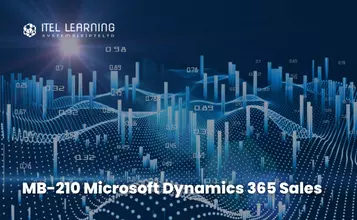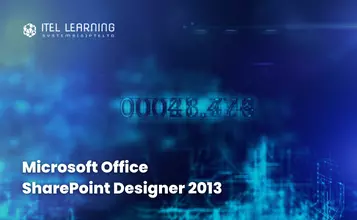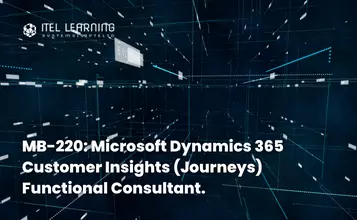Course Fee (with 9% GST)
Full Course Fees: $2,725
Self-Sponsored
SG Citizen/PR aged ≥ 21 years: $817.50
SG Citizen aged ≥ 40 years: $317.50
Co-Sponsored (SME)
SG Citizen/PR aged ≥ 21 years: $317.50
SG Citizen aged ≥ 40 years: $317.50
Co-Sponsored (MNC)
SG Citizen/PR aged ≥ 21 years: $817.50
SG Citizen aged ≥ 40 years: $317.50
Overview
Course reference number: TGS-2023021378
The Certified Ethical Hacker (CEH) credential is the most trusted ethical hacking certification and accomplishment recommended by employers globally. It is the most desired information security certification and represents one of the fastest-growing cyber credentials required by critical infrastructure and essential service providers. Since the introduction of CEH in 2003, it is recognized as a standard within the information security community. CEH v11 continues to introduce the latest hacking techniques and the most advanced hacking tools and exploits used by hackers and information security professionals today. The Five Phases of Ethical Hacking and the original core mission of CEH remain valid and relevant today: “To beat a hacker, you need to think like a hacker.”
Prerequisites
Participants who wish to take up Certified Ethical Hacker (CEH) (SF) should have experience and educational background on information security.
IMportant notes
- Must attend at least 75% of the course before being eligible to take the assessments.
- Dynamic QR Code Attendance Taking:
a. Scan the QR Code that will be displayed by the Trainer on each session. Use your SingPass App to scan and submit your attendance. If you fail to do so, you will be deemed absent from that session.
b. The QR Code is only accessible on:
• Morning Session: between 9.00 am to 1.00 pm.
• Afternoon Session: between 2.00 pm to 6.00 pm.
c. Please take the attendance one at a time as the system can only register you one by one. - Sign daily on the Attendance Sheet as a backup if any technical glitch happens.
- Submit Course Evaluation by the end of each module to help us improve the course and your future learning experience with us.
- Attended at least 75% of the course.
- Declared as competent during the assessments.
Who Should Attend?
- Information Security Analyst/Administrator
- Information Assurance (IA) Security Officer
- Information Security Manager/Specialist
- Information Systems Security Engineer/Manager
- Information Professionals/Officers
- Information Security and IT Auditors
- Risk/Threat/Vulnerability Analyst
- System Administrators
- Network Administrators and Engineers
- Anyone who is concerned about the integrity of the network infrastructure
Course Outline
- Information Security Overview
- Cyber Kill Chain Concepts
- Hacking Concepts
- Ethical Hacking Concepts
- Information Security Controls
- Information Security Laws and Standards
- Footprinting Concepts
- Footprinting through Search Engines
- Footprinting through Web Services
- Footprinting through Social Networking Sites
- Website Footprinting
- Email Footprinting
- Whois Footprinting
- DNS Footprinting
- Network Footprinting
- Footprinting through Social Engineering
- Footprinting Tools
- Footprinting Countermeasures
- Networking Scanning Concepts
- Scanning Tools
- Host Discovery
- Port and Service Discovery
- OS Discovery (Banner Grabbing/OS Fingerprinting)
- Scanning Beyond IDS and Firewall
- Draw Network Diagrams
- Enumeration Concepts
- NetBIOS Enumeration
- SNMP Enumeration
- LDAP Enumeration
- NTP and NFS Enumeration
- SMTP and DNS Enumeration
- Other Enumeration Techniques
- Enumeration Countermeasures
- Vulnerability Assessment Concepts
- Vulnerability Classification and Assessment Types
- Vulnerability Assessment Solutions and Tools
- Vulnerability Assessment Reports
- System Hacking Concepts
- Gaining Access
- Escalating Privileges
- Maintaining Access
- Clearing Logs
- Malware Concepts
- APT Concepts
- Trojan Concepts
- Virus and Worm Concepts
- Fileless Malware Concepts
- Malware Analysis
- Countermeasures
- Anti-Malware Software
- Sniffing Concepts
- Sniffing Technique: MAC Attacks
- Sniffing Technique: DHCP Attacks
- Sniffing Technique: ARP Poisoning
- Sniffing Technique: Spoofing Attacks
- Sniffing Technique: DNS Poisoning
- Sniffing Tools
- Countermeasures
- Sniffing Detection Techniques
- Social Engineering Concepts
- Social Engineering Techniques
- Insider Threats
- Impersonation on Social Networking Sites
- Identity Theft
- Countermeasures
- DoS/DDoS Concepts
- DosS/DDoS Attack Techniques
- Botnets
- DDoS Case Study
- DDoS/DDoS Attack Tools
- Countermeasures
- DoS/DDoS Protection Tools
- Session Hijacking Concepts
- Application Level Session Hijacking
- Network Level Session Hijacking
- Session Hijacking Tools
- Countermeasures
- IDS, IPS, Firewall, and Honeypot Concepts
- IDS, IPS, Firewall, and Honeypot Solutions
- Evading IDS
- Evading Firewalls
- IDS/Firewall Evading Tools
- Detecting Honeypots
- IDS/Firewall Evasion Countermeasures
- Web Server Concepts
- Web Server Attacks
- Web Server Attack Methodology
- Web Server Attack Tools
- Countermeasures
- Patch Management
- Web Server Security Tools
- Web Application Concepts
- Web Application Threats
- Web Application Hacking Methodology
- Web API, Webhooks, and Web Shell
- Web Application Security
- SQL Injection Concepts
- Types of SQL Injection
- SQL Injection Methodology
- SQL Injection Tools
- Evasion Techniques
- Countermeasures
- Wireless Concepts
- Wireless Encryption
- Wireless Threats
- Wireless Hacking Methodology
- Wireless Hacking Tools
- Bluetooth Hacking
- Countermeasures
- Wireless Security Tools
- Mobile Platform Attack Vectors
- Hacking Android OS
- Hacking iOS
- Mobile Device Management
- Mobile Security Guidelines and Tools
- IoT Hacking
- IoT Concepts
- IoT Attacks
- IoT Hacking Methodology
- IoT Hacking Tools
- Countermeasures
- OT Hacking
- OT Concepts
- OT Attacks
- OT Hacking Methodology
- OT Hacking Tools
- Countermeasures
- Cloud Computing Concepts
- Container Technology
- Serverless Computing
- Cloud Computing Threats
- Cloud Hacking
- Cloud Security
- Cryptography Concepts
- Encryption Algorithms
- Cryptography Tools
- Public Key Infrastructure (PKI)
- Email Encryption
- Disk Encryption
- Cryptanalysis
- Countermeasures
- Operating System Concepts
- File Systems
- Computer Network Fundamentals
- Basic Network Troubleshooting
- Virtualization
- Network File System (NFS)
- Web Markup and Programming Languages
- Application Development Frameworks and Their Vulnerabilities
- Web Subcomponents
- Database Connectivity
- Information Security Controls
- Network Segmentation
- Network Security Solutions
- Data Leakage
- Data Backup
- Risk Management Concepts
- Business Continuity and Disaster Recovery
- Cyber Threat Intelligence
- Threat Modeling
- Penetration Testing Concepts
- Security Operations
- Forensic Investigation
- Software Development Security
- Security Governance Principles
- Asset Management and Security








